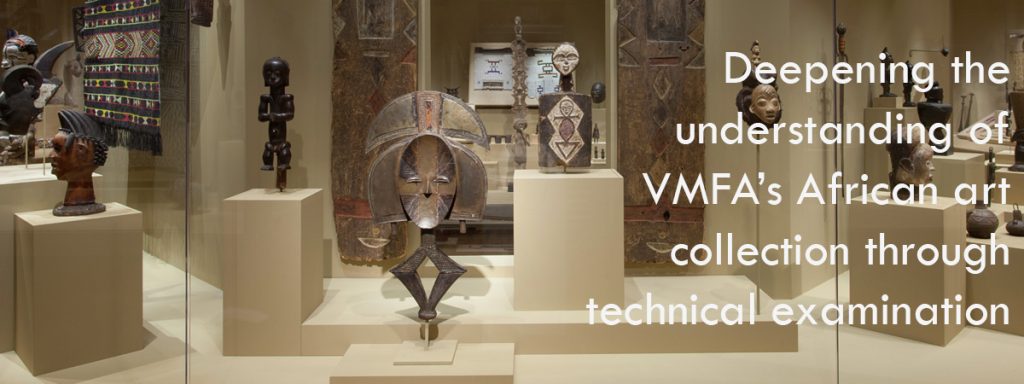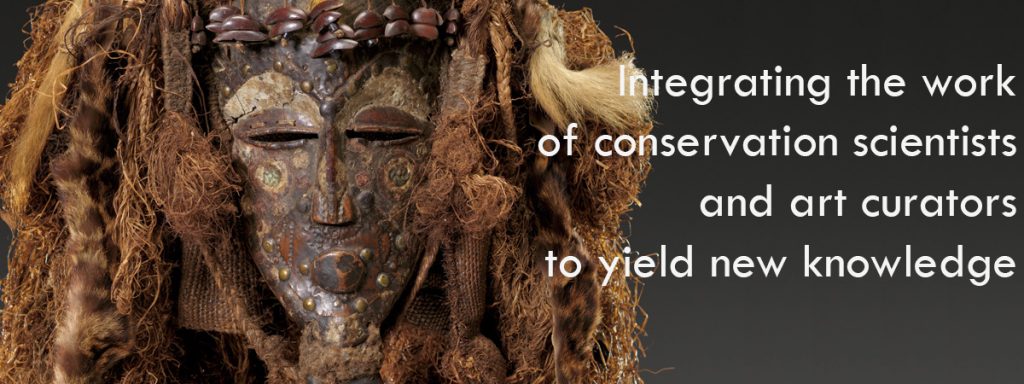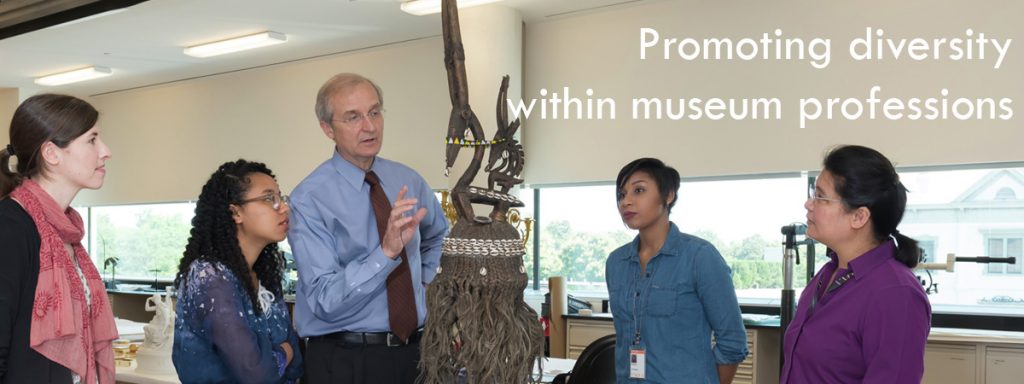
Studying an 18th Century Ethiopian Cross
The research on the African Collection being carried out as part of the recently awarded Andrew W. Mellon grant is continuing to produce new insights into the objects in our collection. For example, as part of a comprehensive study of the Ethiopian crosses in our collection, an 18th century hand cross (#2015.319) has undergone a battery of scientific testing to determine its construction and composition. One of the first discoveries during this testing was that the cross is made of an alloy of silver, copper, and zinc– not iron, as was listed in the museum records.

Feather Identification with Dr. Carla Dove
We (VMFA conservators Ainslie Harrison and Casey Mallinckrodt) recently travelled to Washington DC with the VMFA’s Yoruba Ogboni Society Plaque (#2000.97) to consult with Dr. Carla Dove in the Feather Identification Lab at the National Museum of Natural History. Dr. Carla Dove generously agreed to take a break from her primary work identifying birds involved in aviation accidents (AKA bird strikes), to sample and evaluate the feathers embedded in the accretions on the Ogboni plaque (check out the amazing work Dr. Dove does on Science Friday!).

The Grant
The Andrew W. Mellon Foundation has awarded the Virginia Museum of Fine Arts a $1.5 million grant to support in-depth technical examination, conservation, and art historical studies of the museum’s outstanding African art collection.
Read More
The Team
The team assembled for the Andrew Mellon Foundation grant for the Conservation Initiative in African Art works collaboratively across the curatorial and conservation disciplines to uncover hidden information about the objects in VMFA’s African collection while breaking new ground in the science of conservation.
Meet the team
Analytical Techniques
Through the Mellon Grant, VMFA has acquired new scientific equipment that has significantly enhanced the analytical capabilities of the Conservation laboratory.
Explore the process
Events
Links














